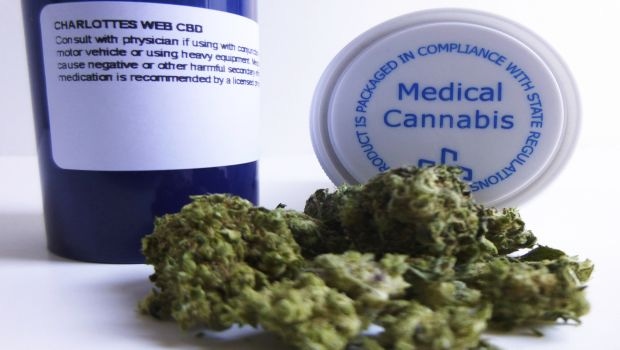New interest in CBD products has created a growing demand, but issues of quality, manufacturing and regulatory can hamper growth. A brand need to get educated and experienced with hemp CBD so it can stand out above the weeds.

When it comes to cannabinoids, many people think in terms of one chemical, be that THC (tetrahydrocannabinol) or CBD (cannabidiol). It's a tendency we have in our drug-oriented medical system. But, when it comes to the phytocannabinoid CBD, the associated substances in the formula make a big difference in results.
The cannabis plant is a treasure trove of bioactive chemicals that have been part of human culture for at least 5 millennium. In addition to more than 60 cannabinoids like THC and CBD, terpenes and flavonoids also enrich the whole plant extracts. For many years, THC was considered the only active component of interest. Research was extremely limited because in 1970, cannabis was listed as a schedule I substance, meaning it had no medical benefit. Only a trickle of research continued until a new extraction technique allowed industrial hemp, naturally low in THC, to offer non-psychoactive cannabinoids that were totally legal to science and the public.
In the exploding markets of hemp CBD, federal agencies are way behind in regulating products, claims and quality. That leaves the door open for ineffective products and unscrupulous vendors. What's more, since hemp products are considered a food product, there is no more control on them than ginkgo.
Starting at ground-level, let's look closely at the hemp and its CBD products. Cannabis enriches the soil with nitrogen and blocks weed formation with dense foliage. It also absorbs toxic metals from the soil. That's good for the soil, but it could lead to contaminated products. And, hemp is not immune to insects and molds, so there's always the potential for pesticide contamination. Growing organically is key. After harvest, extraction poses a number of problems because of the solvents generally used. In upscale operations, supercritical carbon dioxide extraction has revolutionized the herbal supplement industry and hemp oil in particular by carefully removing the desired substances. In addition, carbon dixoide doesn't damage the cannabinoids because it uses relatively low temperatures. Not so for producers unwilling or unable to afford this six-figure equipment. Instead, they use more primitive solving extractions potentially leaving solvents, heavy metals or pesticides in the product.
After extraction, hemp CBD concentrate is not aesthetically pleasing for most clients, so it may be filtered and mixed into other forms for oral, sublingual, transdermal or even inhaled forms. Filtering and decarboxylation will remove most of the waxes and concentrate the CBD, but the process may alter the natural cannabis blend, or, what is been termed, the “entourage" of valuable associated phytonutrients that impact the clinical efficacy. The technology here is fundamental to the advancement of whole plant extracts.
Unfortunately, the hemp concentrate market is like the California Gold Rush of 1949 with little meaningful regulation and unscrupulous vendors. Add to that the lack of clinical research and that makes choosing a CBD concentrate almost an act of faith instead of science. A brand can protect itself and its money by looking for some key pieces of information about CBD concentrate:
• What are the lab results from testing?
• Does the lab analysis including the cannabinoids profile in addition to THC and CBD, residual solvents, pesticides and heavy metals? (The last three should be undetectable.)
• Look for certification of the lab and the testing date. Farms and extractors change, does the testing continue?
• Was this the test result on raw material, extraction, filtered product or end product?
• What additional substances have been added such as essential oils, flavors or stabilizers?
Do the Math
Sometimes, it takes some sophisticated math to figure out how much CBD is actually in an oil. Many sellers confuse clients by listing the weight of the product versus the amount of CBD. For example, 5 g of any-brand-CBD-oil may contain anywhere between 2,500 mg to 250 mg of actual CBD. And, the price may not make a distinction. Some products might not even contain CBD. To date, CBD products have been limited to oils and tinctures. But water-soluble concentrates may be available in the near future that could solve, or complicate, a number of issues with respect to self-administration.
Like whole foods, whole plant extracts appear to offer the greatest health potential for the public. Synthetic cannabinoids—copies of the natural plant and human cannabinoids by pharmaceutical companies—have not performed well in studies or as medications. Rimonabant, a synthetic cannabinoid for obesity was withdrawn after a few years because of severe side effects. Marinol is a synthetic THC helpful to cancer patients with severe nausea and vomiting, but also fraught with psychoactive effects. Sativex is a pure THC/CBD oral blend in equal proportions that is been only marginally effective for multiple sclerosis spasm, but also includes a 25-percent rate of side effects. When combined, CBD usually counteracts effects of THC and prevents the psychoactive effects, but not in this commercial product. Furthermore, in Sativex drug studies, THC drastically reduced the bioavailability of both substances. For some reason, that does not seem to happen in whole plant products.
What’s the Right Stuff?
Medical providers don't know the right therapeutic combinations of THC or CBD because the products are so highly variable in composition. And, users’ response seems just as varied, probably due to their endocannabinoid deficiency.
Choosing the right product, then, takes some hard work. After choosing a target audience and some realistic therapeutic goals, a brand will be looking for a quality product from a reliable supplier that is consistent in their statements. A timely, full lab analysis and clear product information are important. Where was the hemp grown and extracted could tell a brand a lot about the quality because northern Europe has been providing hemp products internationally for decades and has set the standards. Ultimately, a brand wants to see results that will likely require sampling and assessment. If clients are not raving, a brand may need to do some detective work on modifications to the product, anywhere from source to packaging.
The issues of quality, manufacturing and regulatory are not likely to be corrected anytime soon. So a brand need to get educated and experienced with hemp CBD so it can stand out above the weeds.
Dr. Philip Blair ([email protected], [360] 991-4791), medical director for Elixinol LLC, is a board-certified family practitioner and retired U.S. Army colonel who provides international consultation regarding cannabidiol (CBD) from industrial hemp. He has extensive knowledge and experience in the use CBD for a wide variety of conditions and consults with organizations, medical professionals and patients. He is also vice president and chief medical officer at Pro Health Advisor.
About the Author(s)
You May Also Like




.png?width=800&auto=webp&quality=80&disable=upscale)